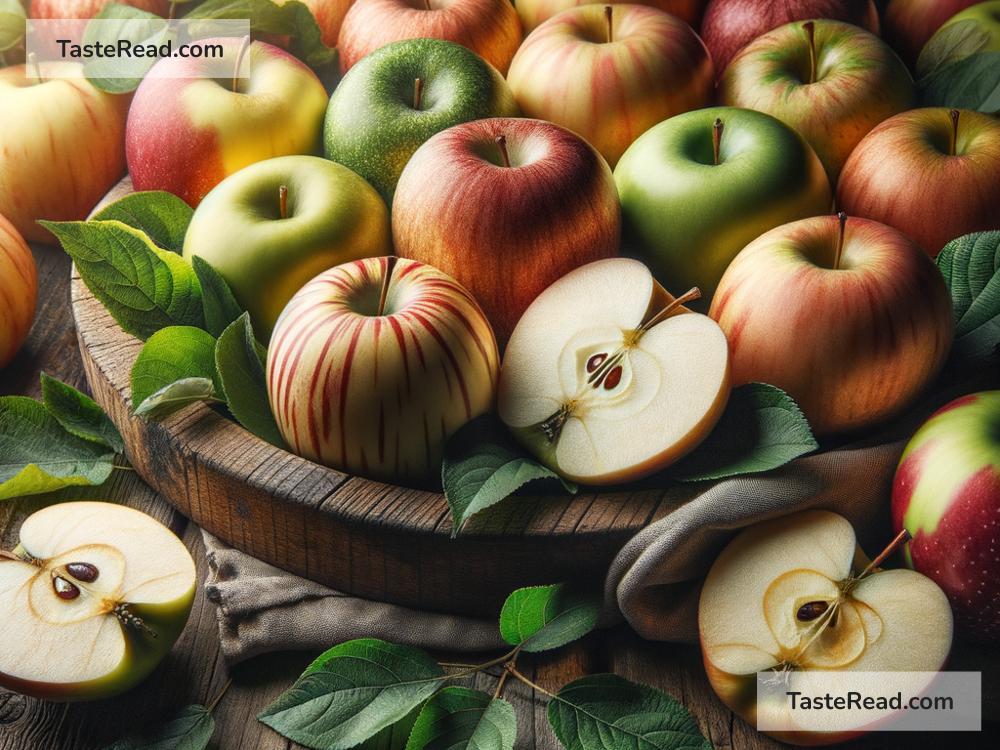The Effect of Genetic Diversity on Fruit Taste
Fruits are one of nature’s sweetest treats. Whether you’re biting into a crisp apple, enjoying a juicy mango, or savoring a ripe strawberry, the burst of flavor can make your day brighter. But have you ever wondered why fruits taste different, even if they’re the same type? Why, for example, does one strawberry taste sweeter than the other? The answer lies in genetic diversity.
What is Genetic Diversity?
Genetic diversity, in simple terms, refers to the variety of genes within a species. Genes are like tiny instruction manuals found in every living thing, including fruits. They determine how a fruit grows, what nutrients it contains, its color, and, of course, its taste.
Just like humans inherit physical traits from parents (such as eye color or height), fruits inherit traits from their “parent plants.” Different plants of the same species can have slightly different genes, leading to variations in the fruits they produce. These differences greatly influence the taste of the fruit.
How Genetic Diversity Affects Fruit Taste
Fruit taste is a mixture of sweetness, sourness, bitterness, and other flavor components. Let’s break down how genetic diversity affects these taste factors:
1. Sweetness
The sweetness of a fruit comes from its sugar content. Some fruit varieties naturally produce more sugars during the ripening process because their genes work differently. For example, there are thousands of varieties of apples, ranging from sweet (like Honeycrisp) to tart (like Granny Smith). This variation happens because the genes in each apple variety control how much sugar is stored in the fruit.
2. Sourness
The sourness in fruits comes from acids, such as citric acid in lemons or malic acid in apples. Some fruits have genes that make them produce higher amounts of acids, resulting in a tangy or tart taste. Others have lower acidity levels, making them milder or sweeter.
3. Aroma and Flavor Compounds
Aside from sweetness and sourness, fruits have unique aromas and flavors. These come from special compounds made by the fruit. For example, bananas have a compound called isoamyl acetate that gives them their distinct smell. In mangoes, over 300 different chemical compounds contribute to their tropical flavor. The genes in each fruit control which compounds are made and how strong they are, leading to differences in taste and aroma.
4. Texture and Juiciness
While texture might not seem like a flavor factor, it plays a large role in how we experience fruit taste. A firm, crunchy apple feels different from a soft, juicy one. Genes influence how much water a fruit stores and the structure of its cells, which can affect texture and juiciness.
Examples of Genetic Diversity in Fruits
Let’s look at a few examples to better understand how genetic diversity shapes fruit taste:
Strawberries
If you’ve ever eaten strawberries from different stores or farms, you know they can vary in sweetness and flavor. Wild strawberries are tiny and packed with intense flavor, while commercially grown strawberries are often bred to be larger, sweeter, and easier to transport. This difference exists because farmers choose specific strawberry plants with desirable traits and combine them through breeding.
Grapes
Grapes are another great example of genetic diversity. Some varieties, like Concord grapes, are bold and tangy, while others, like Red Globe, are mild and sweet. Wine grapes, such as Pinot Noir or Chardonnay, are prized for their unique flavors, which arise from specific genetic combinations.
Bananas
Most bananas sold in stores worldwide are of the “Cavendish” variety. They’re sweet and creamy because they come from plants with genes selected for these traits. However, other banana varieties, like “Red Dacca” or “Blue Java,” have different genetic makeup, leading to distinct flavors like berry-like sweetness or hints of vanilla.
The Role of Farming and Breeding
Farmers and scientists play an important role in shaping the taste of fruits. By studying plant genes, they can selectively breed varieties that emphasize certain traits, such as enhanced sweetness or resistance to diseases. Modern techniques like genetic modification (GM) also allow scientists to directly change some genes in fruits to improve their taste, shelf life, or nutritional value.
However, focusing too much on specific traits can sometimes reduce genetic diversity. For example, relying on just one variety of fruit, like Cavendish bananas, makes the species more vulnerable to diseases or environmental changes. That’s why preserving the genetic diversity found in wild fruit varieties is crucial for ensuring the future of tasty, healthy crops.
Why Genetic Diversity Matters to Us
Genetic diversity not only makes fruits delicious but also ensures their survival. It helps fruits adapt to changing environments, resist pests and diseases, and produce high-quality yields. By exploring and protecting the genetic diversity of plants, humans can continue to enjoy a world of flavorful fruits.
For fruit lovers, genetic diversity is a hidden treasure. Every bite you take comes from a history of natural variation and human efforts to cultivate the best flavors. So, the next time you savor a piece of fruit, remember that genetic diversity is the secret ingredient behind its taste.
In conclusion, genetic diversity is the key to understanding why fruits taste the way they do. From sweetness to aroma, this natural variation makes every fruit unique. By valuing and preserving the genetic diversity in plants, we ensure that future generations will continue to enjoy the amazing flavors that fruits have to offer.


